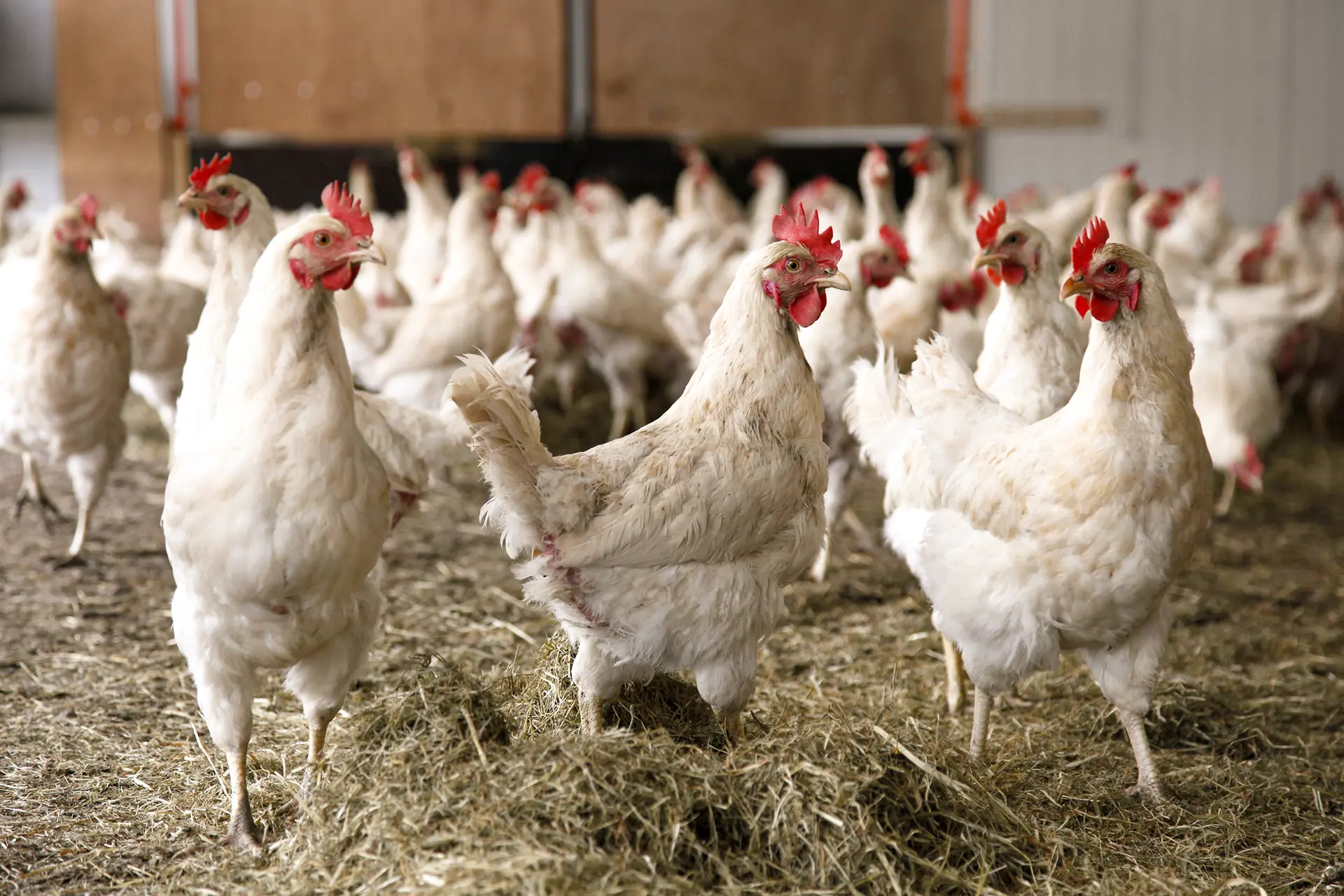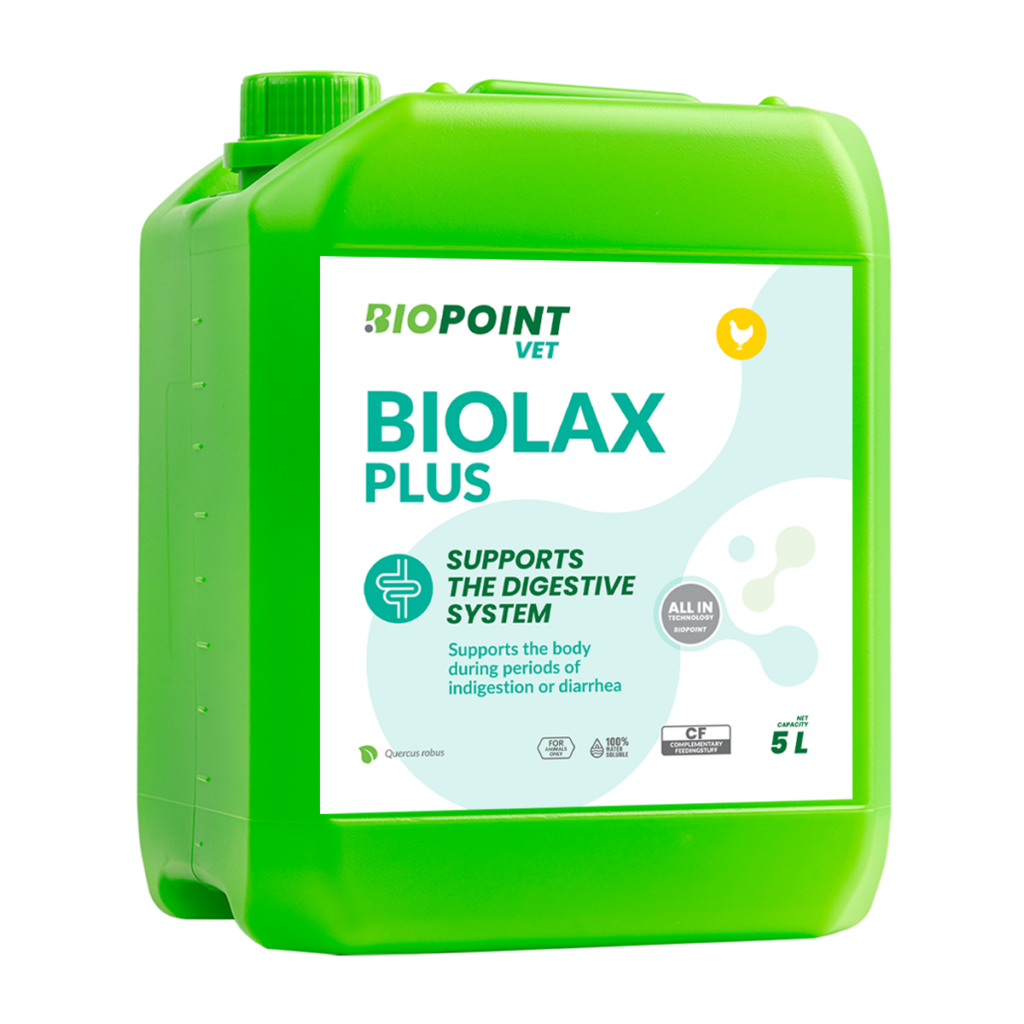One of the most important factors that significantly affects the health of poultry is providing animals with appropriate hygienic and living conditions. This includes ensuring good ventilation in farm rooms and using well-dried bedding that effectively absorbs water, stool, and moisture. Wet litter, characterized by its dampness, becomes a thriving environment for the development of fungi, bacteria, and viruses, which can lead to numerous diseases in poultry. Managing the moisture levels of the litter is therefore crucial to maintaining a healthy environment for the birds, reducing the risk of disease and enhancing overall farm productivity.
What characteristics should the bedding have?
Healthy bedding is essential for the proper development of poultry. Much like a mattress for humans, bedding for poultry should be heat-absorbent, dry, low in dust, and free from mechanical impurities. Optimal litter should contain about 75% dry matter to ensure it remains effective in its role. Additionally, it must be highly absorbent and able to effectively absorb ammonia, which can be harmful in high concentrations. Effective bedding also acts as a barrier, keeping hens separated from dirt and feces on the ground. Wet litter, by contrast, is a hazard for poultry as it fosters the growth of pathogens, increasing the risk of diseases significantly.
Bedding Options for Optimal Moisture Control
Choosing the right bedding material is pivotal in managing wet litter issues effectively. Materials such as pine shavings, straw, and rice hulls are popular due to their high absorbency and ease of management. Each type of bedding has its benefits; for instance, pine shavings are excellent for absorbing moisture and odors, while straw is often preferred for its availability and cost-effectiveness. Rice hulls, though less common, offer great durability and do not compact easily, making them ideal for use in wetter environments. When selecting bedding, it's important to consider factors such as local climate, availability of materials, and the specific needs of the poultry breed being raised to ensure optimal moisture control and overall litter quality.
Common Causes of Wet Litter
Wet litter typically results from a combination of factors, including poor ventilation, inadequate management of drinking systems, high ambient humidity, and improper bedding material. When litter remains wet, it adheres to the ground and accumulates in corners, creating an ideal breeding ground for pathogenic microorganisms. These pathogens can proliferate rapidly under such conditions, leading to increased disease incidence and potentially higher daily mortality rates among the birds. Additionally, prolonged exposure to wet litter can cause dermatitis on the soles of the birds' feet, further impacting their health and welfare.
Biolax Plus: A Strategic Solution for Wet Litter Prevention
Biolax Plus emerges as a strategic remedy to address the persistent issue of wet litter in poultry farms. This specialized mixture of herbs, enriched with tannins, is designed to support the health of poultry, especially during episodes of indigestion and diarrhea, which are common causes of wet litter. The effectiveness of Biolax Plus is particularly notable in settings where the use of antibiotics is restricted or undesirable, making it an ideal solution for enhancing health during critical periods such as the laying phase and prior to the birds being sold for slaughter. Its herbal composition not only addresses immediate health concerns but also contributes to the long-term well-being of the poultry by creating a more hygienic living environment.
How Biolax Plus Works to Enhance Poultry Health
The core component of Biolax Plus, tannins, play a pivotal role in the digestive system of poultry. These naturally occurring compounds enhance the gastrointestinal tract's function, crucial during periods of high moisture loss like diarrhea. Tannins aid in the removal of toxins, bolster metabolic processes, and stimulate the secretion of digestive enzymes and the absorption of nutrients. By improving digestive health, Biolax Plus significantly reduces the occurrence of wet litter, which in turn helps maintain dry and hygienic bedding. This comprehensive approach not only helps in controlling the moisture content of the litter but also strengthens the birds' resistance to diseases, ensuring a healthier flock.
Management Practices to Control Litter Moisture
Effective moisture control in poultry bedding is crucial for preventing wet litter and maintaining an optimal living environment for poultry. Key management practices include regular monitoring and adjustment of ventilation systems to ensure adequate airflow and moisture removal. It's essential to maintain the right balance of temperature and humidity within the barn to prevent the bedding from becoming too damp. Additionally, proper management of water systems to prevent leaks and ensuring that drinker lines are functioning correctly can significantly reduce excessive moisture. Regularly turning over the litter to expose wet areas to air helps in drying them out, preventing the formation of clumps and the growth of harmful pathogens. Adopting these practices ensures the longevity of the bedding material and contributes to overall farm hygiene and bird health.
Learn More About Biolax Plus
Discover the benefits of incorporating Biolax Plus into your poultry management strategy by exploring our detailed product pages. Biolax Plus is designed not only to tackle the immediate challenges of wet litter but also to enhance the overall health and productivity of your poultry. Whether you are facing acute wet litter issues or looking for preventive measures, Biolax Plus offers a solution tailored to your needs. We encourage you to contact our expert team for personalized advice and support. Take the first step towards a healthier poultry environment today by learning more about how Biolax Plus can make a difference in your operations.

